Learn how to get rid of acne with picks from The Knot for the best, fastest-acting acne treatment.
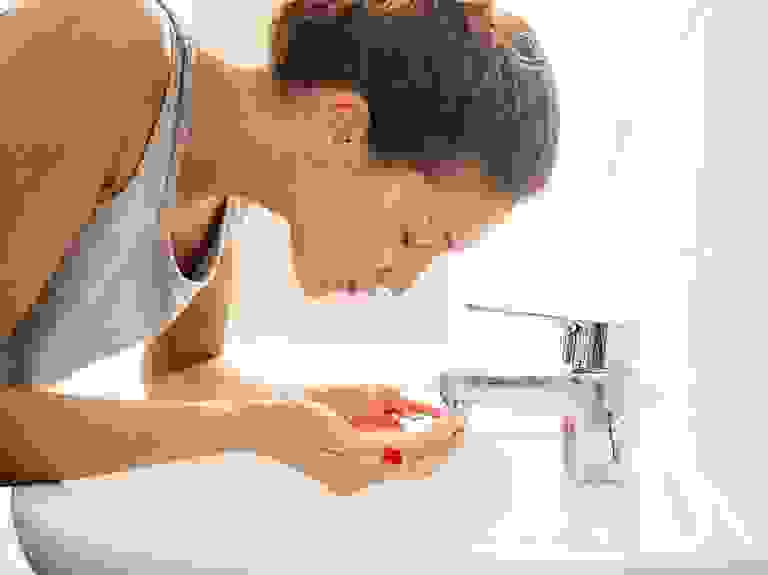
If you've found yourself hoping and wishing for clear skin and wondering how to get rid of acne, you're definitely not alone! It's almost a rite of passage for teens, up to 85 percent of whom will suffer pimples, whiteheads, blackheads, cysts or pustules. Some grow out of it, but not all; acne is the most common skin condition in the US and affects up to 50 million Americans annually.
And acne is more than an inconvenience. It can cause both physical and psychological problems including permanent scarring of the skin, poor self-image and low self-esteem and depression and anxiety. Here you'll learn how to prevent acne, the best pimple treatment for your skin, the best acne products, home remedies for zits and so much more.
Before we go into details about the different kinds of acne and what causes your breakouts, we'll first discuss some top ways on how to get rid of pimples to help your skin shine.
9 Tips on How to Get Rid of Zits Fast
The best way to get rid of zits is to find out what's causing it and address that underlying issue, which we will go into more detail later in this guide. If you need some quick tips on how to get rid of acne, start by following these top helpful tricks.
1. Use the Best Acne Products for Your Skin
There are several acne remedies on the market and even home remedies for acne you can try, but which ones are right for your skin? That depends on the type of acne you're experiencing.
2. Wash Your Face With Acne Soap
Washing your face with regular soap isn't enough to make your breakouts better. The best face wash for acne is effective at removing oil and dirt, but still gentle enough to use regularly without overdrying your skin. Look for topical acne medication ingredients salicylic acid and/or benzoyl peroxide in your face wash and use gentle, nonabrasive cleansing techniques.
3. Moisturize Your Acne Prone Skin
Some think that avoiding putting anything at all on the face will help get rid of acne fast, but this is a misconception. Failing to moisturize your skin can lead to over-drying, which can cause excess oil production. Keeping your skin hydrated with an oil-free moisturizer designed for acne-prone skin is an important step toward clear skin.
4. Cover up With the Best Foundation for Acne Prone Skin
When you need your pimples to disappear in a pinch, you may have to get a little creative. Using foundation won't make your zits go away, but it can temporarily cover them up. Regular foundation can help smooth your skin and even out skin tone. Using the best foundation for acne prone skin can also provide a much needed emotional boost from looking your best. After cleansing and moisturizing, use a foundation designed for combination or oily skin to prevent acne. Make sure it's labeled "non-acnegenic" and "non-comedogenic."
5. Look into Low-Level Light Device Options
There are several low-level light devices designed as at-home acne remedies on the market—but do they really work? Some, like the Zeno electronic "zit-zapper" are FDA-approved as acne remedies, but reviews with these products are typically mixed. Even the best acne treatment won't work for everyone, as the severity of the acne, types of acne and quality of the device are all factors. Ask your dermatologist for a recommendation if you're considering purchasing an at-home light device to treat your acne.
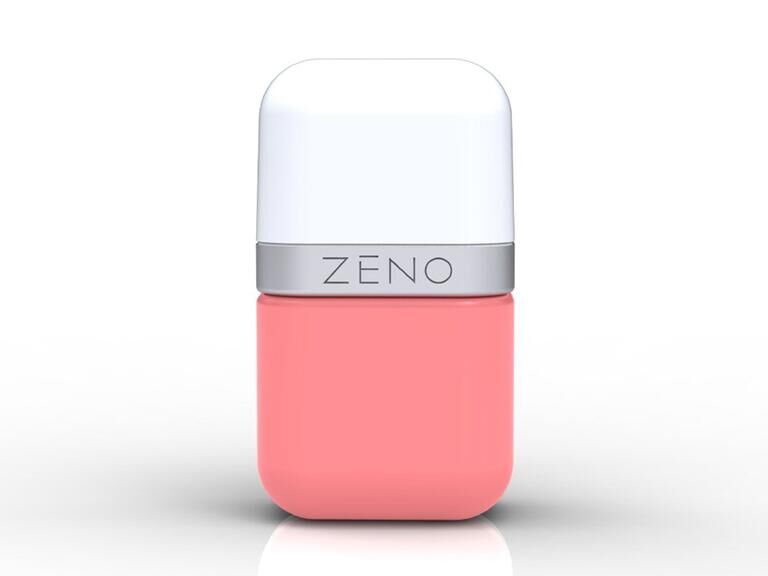
Zeno Hot Spot blemish clearing device, $60, Amazon.com
6. Experiment with Acne Medications
You've probably seen the Proactiv clear skin system advertised on television at some point over the last several years, but does it work? Proactiv is one of the better acne remedies out there for mild cases of inflammatory and noninflammatory acne, hormonal acne and adult acne. The starter kit comes with a gentle benzoyl peroxide exfoliating cleanser, a glycolic acid pore cleanser, and a benzoyl peroxide repairing treatment.
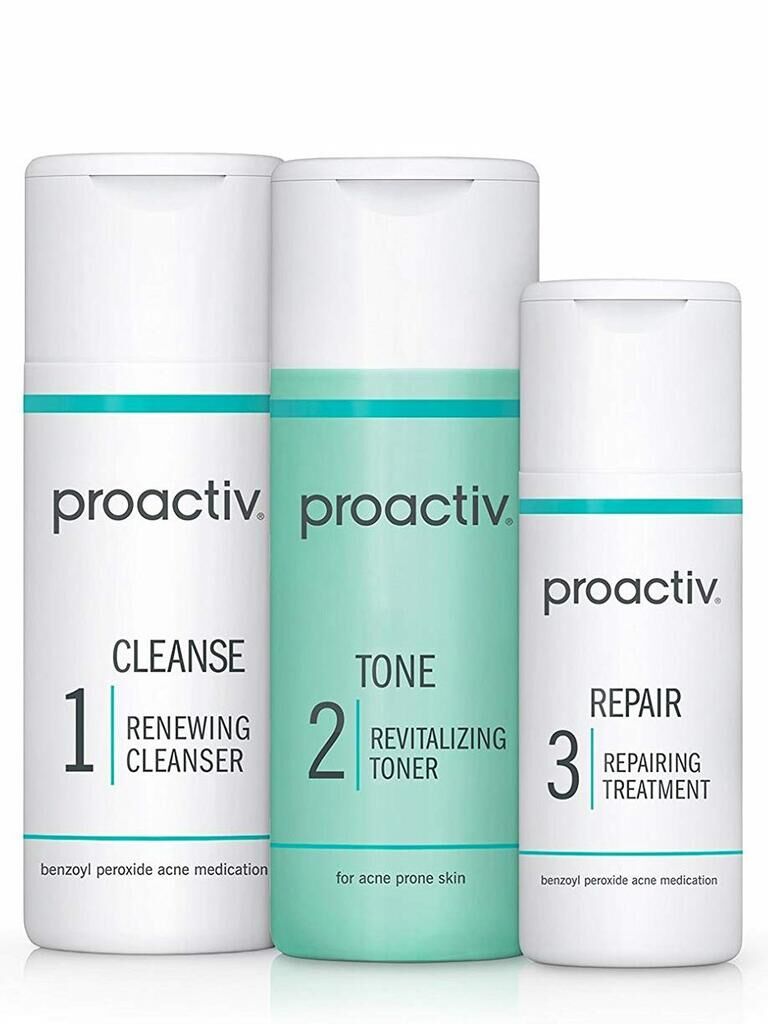
Proactiv 3-step acne treatment system, from $33 for a 30-day starter kit, Amazon.com
Another option is Clean & Clear's Continuous Control Acne Cleanser, a 10 percent benzoyl peroxide facial cleanser, is one of the best face washes designed for everyday cleansing if you have acne. Add an oil-free facial sunscreen as well.

Clean & Clear Continuous Control acne facial cleanser, from $9, Target.com
You can also try e.l.f. brand Acne Fighting Foundation, which contains ingredients to both fight acne and soothe irritated skin, including salicylic acid, witch hazel, camphor, tea tree extract and aloe. This is one of the best acne products on the market for not only "covering up" acne, but continuing to treat it, as well.
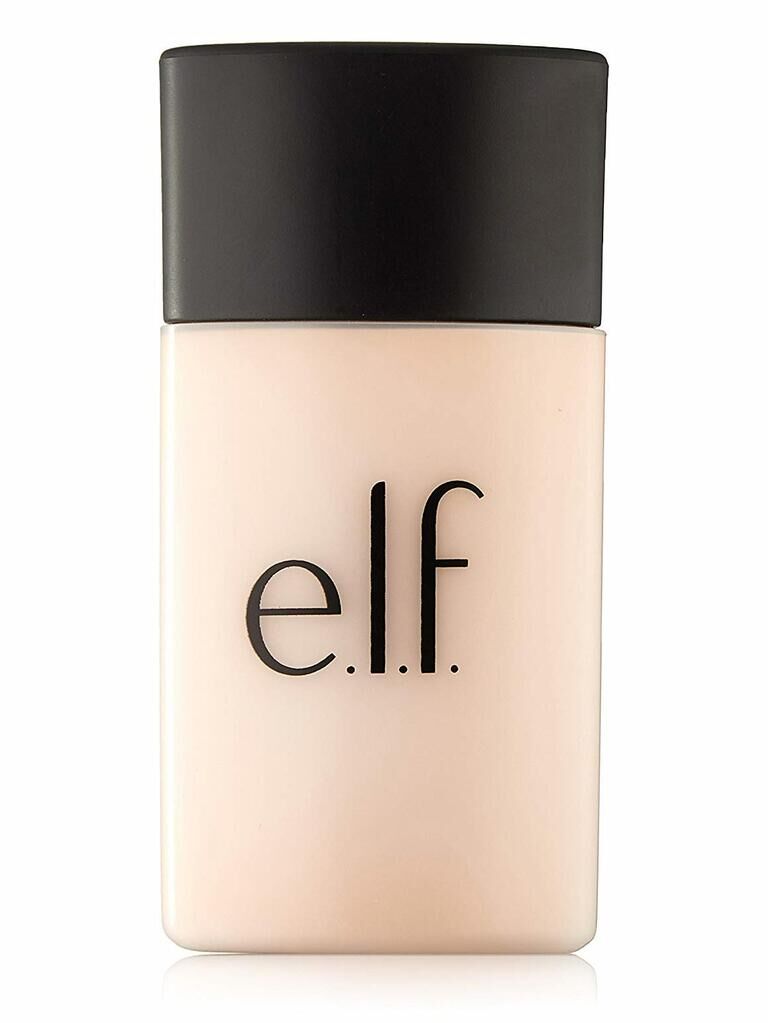
e.l.f Cosmetics Acne Fighting foundation, from $6, Amazon.com
Our final suggestion is Effaclar Duo includes micronized benzoyl peroxide (5.5 percent) that gets at acne deep within the skin. The non-drying, oil-free product is good for moderate acne.
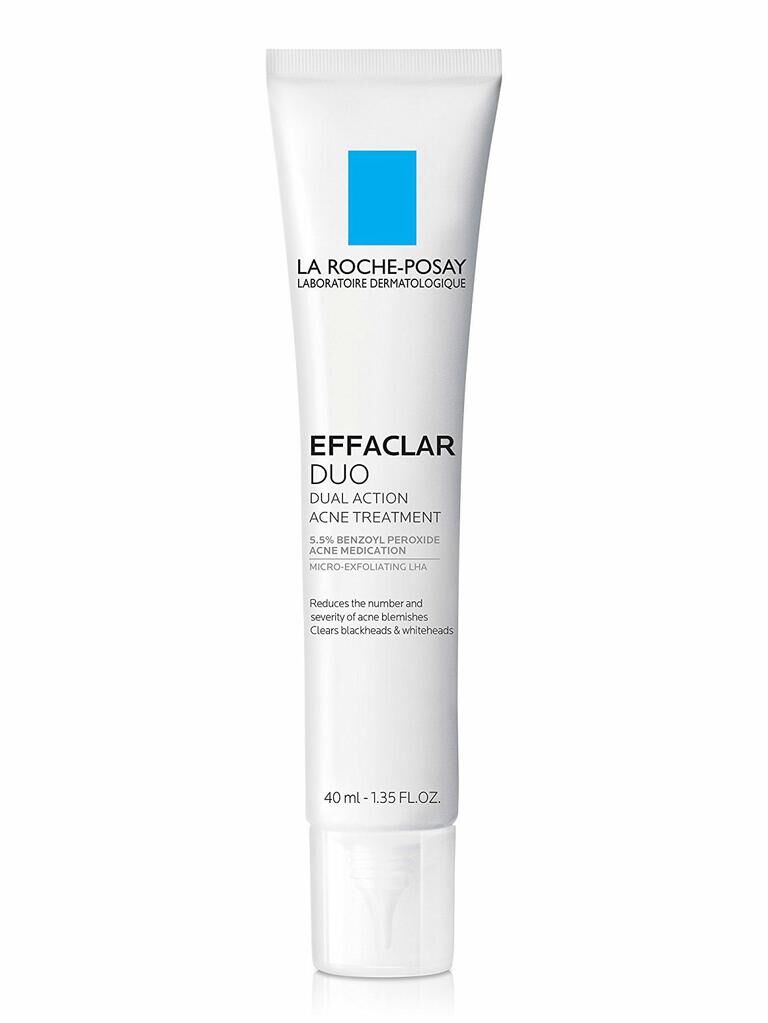
La Roche Posay Effaclar Duo duel action acne treatment cream, from $20, Amazon.com
7. Ask Your Doctor About Acne Medications
If you have persistent pimples, you may want to ask your doctor about available prescriptions and whether they might be a good fit for you. There are several FDA-approved oral and topical medications on the market that could help improve your skin, such as minocycline, spironolactone, and isotretinoin. We'll discuss these prescription medications and more later on.
8. Explore Natural Treatments
Rather go the natural route? Coconut oil and tea tree oil have long been hailed for their acne-fighting properties. You can also find several natural products that contain these ingredients at your local drug store. Continue reading for more tips on natural zit treatments.
9. Make Your Own Natural Remedy
Another way to get rid of your pimples is to try making your own all-natural at-home remedy using ingredients you already have in your cupboard, such as apple cider vinegar or toothpaste. Later in our guide, we outline the specific steps you can take to make these easy zit treatments.
Now that you have a quick peek at how to get rid of pimples, it's time to discover more about types of acne and potential causes for your breakouts.
Types of Acne

Acne Vulgaris:
Also called "simple acne," acne vulgaris appears as whiteheads, blackheads and pimples marring your clear skin. These are caused by dead skin cells and oil clogging hair follicles. British researchers believegenetics are to blame for 80 percent of acne vulgaris cases.
Comedonal acne:
This type of acne is also caused by oil and debris clogging pores, but is characterized by skin-colored bumps called papules. These are typically found on the forehead or chin and are called "comodones," but are more commonly known as blackheads. They may either be closed, where the follicle is completely clogged, or open.
Hormonal Acne:
Women and teenagers are particularly susceptible to hormonal acne, which is caused when hormones trigger excess facial oil production. This type of acne can worsen depending on hormone fluctuations, which is why some women find their acne is worse at specific points in the menstrual cycle.
Inflammatory Acne:
Inflammatory acne is red bumps and pustules, not whiteheads, blackheads and comedones. It doesn't necessarily start as them, either. It arises on its own. Whiteheads, blackheads or comedones that become inflamed can be painful and unsightly. Persistent inflammatory acne may require treatment by a physician or dermatologist, in addition to over-the-counter acne remedies.
Cystic Acne:
The most severe type of acne, cystic acne requires dermatological care and prescription acne medication to treat. Even the best acne products available over the counter are no match for this painful condition in which the area of the outbreak becomes inflamed, but not infected. Cystic acne can result in permanent scarring. However, it's important to know that all acne lesions can scar. Scarring is related to size, amount of inflammation, genetics and delay in therapy.
Foods That Cause Zits
Do a Google search for "how to get rid of zits fast" and you'll see plenty of websites telling you to eat better for clear skin. But are there really foods that cause pimples, or is that an old wives' tale?
Dermatologist Hilary Baldwin, MD, of the Acne Treatment and Research Centre in Morristown, New Jersey, says the answer isn't really simple at all. "The simple answer is, we don't know. So far studies have suggested that high-glycemic index diets (those with lots of white foods like potatoes, pasta, bread, rice and sweets), as well as diets high in skim-milk dairy products and whey protein supplements might be associated with worsening of existing acne but are less likely to cause acne," Baldwin says.

So eating too many sweets could be a potential cause of pimples. You may not want to cut back on your favorite treats, but if you've tried different methods of acne treatment and are still wondering how to get rid of pimples, considering a change in your diet is definitely worth a shot.
Other Acne Causes
As mentioned above, genetics are thought to play a major role in your susceptibility to zits. However, using the best acne products and taking good care of your skin can help you prevent worsening acne and scars later in life. Check out these other known acne causes and aggravators and see how to prevent acne by cutting some out of your life:
- Overactive oil glands, which require oral medications from a dermatologist
- Medications like corticosteroids, lithium or anticonvulsants
- Health-robbing habits: eating a junk food diet, not using medications, smoking and poor skin care routine
According to Baldwin, eating greasy foods and having "dirty skin" aren't actually common acne causes, contrary to popular belief, but wearing cosmetics that clog pores can cause or exacerbate acne.
Acne Medication Options
As mentioned in our list above, acne medication is one route you can take when you're wondering how to get rid of zits. Topical treatments on their own may not be enough to give you clear skin, especially in those with complicated, inflammatory cystic acne. There are several acne medication options approved for use by the FDA, but which one is best for you is a question for your dermatologist and/or general practitioner.
Baldwin says if you have insurance and you have acne, a prescription may be the best step because "it makes no sense to try to handle the condition yourself or to use over the counter products that are always less effective than prescriptions meds." Here are a few of the acne medications you'll want to ask about:
Topical or Oral Antibiotics
Antibiotics are an acne treatment used to kill acne-causing bacteria. They may be applied directly on the skin (topical) or taken by mouth (oral). Topical antibiotics kill bacteria in the upper portion of your pores, while oral antibiotics can reach to the lower depths of the pores. Antibiotics used for acne treatment include clindamycin or tetracyclines like doxycycline or minocycline. These antibiotics are the most effective for treating acne because they both kill bacteria and act as anti-inflammatory agents to calm down the skin.
Minocycline
Minocycline is available in generic form or the branded formulation, Solodyn. The most-prescribed oral antibiotic acne medication for moderate to severe inflammatory acne like cystic acne, Solodyn is a minocycline like those mentioned above. However, it comes in an extended release formula that allows it to work to clear skin over the course of the day with just one daily dose.
Doxycycline
Doxycycline is another of the tetracyclines that's equally effective in treating acne. It comes in generic versions and also as the branded Doryx and Acticlate which are easier on the stomach. Originally FDA approved for the treatment of rosacea, Oracea is a non antibiotic dose of doxycycline that is often used as an acne treatment, as well. Taken orally, it can be used as solo therapy or in combination with a topical acne treatment regimen. More severe cases of acne might need higher doses of doxycycline, but since Oracea is not an antibiotic, many patients can be "down-graded" to Oracea after improvement and it's suitable for longterm use as it doesn't cause antibiotic resistance.
Spironolactone
Spironolactone is an androgen blocker. It can be used to treat hormonal acne in women (only) by reducing the production of androgens (male hormones) in a woman's body, which can then reduce oil production in the skin. If you're wondering how to get rid of acne overnight, keep in mind that aldactone can take up to three months to start taking effect.
Oral Contraceptives With Estrogen
The birth control pill is another option for women suffering hormonal acne. Four types of birth control pills have been approved by the FDA for use as acne treatment, and all four are combination pills that contain both estrogen and progesterone. Talk to your doctor about how to get rid of acne using birth control and keep in mind that Ortho Tri-cyclen, Estrostep YAZ and Beyaz are the only four brands specifically FDA approved as acne remedies.
Isotretinoin
Isotretinoin (previously known as Accutane) is the most effective form of acne therapy and the only one that can actually result in a cure for your acne. After finishing a course 80 percent of people never see acne again. It works so well because it unclogs pores, kills bacteria, reduces oil production and reduces inflammation. It's taken as a daily pill. Isotretinoin has numerous rare and potential side effects that has made it a controversial choice, but for patients with severe acne there is often no other option. Patients taking isotretinoin must also be on highly effective birth control as the drug can cause birth defects. Isotretinoin can only be taken under close medical supervision.
Natural Acne Treatment Options
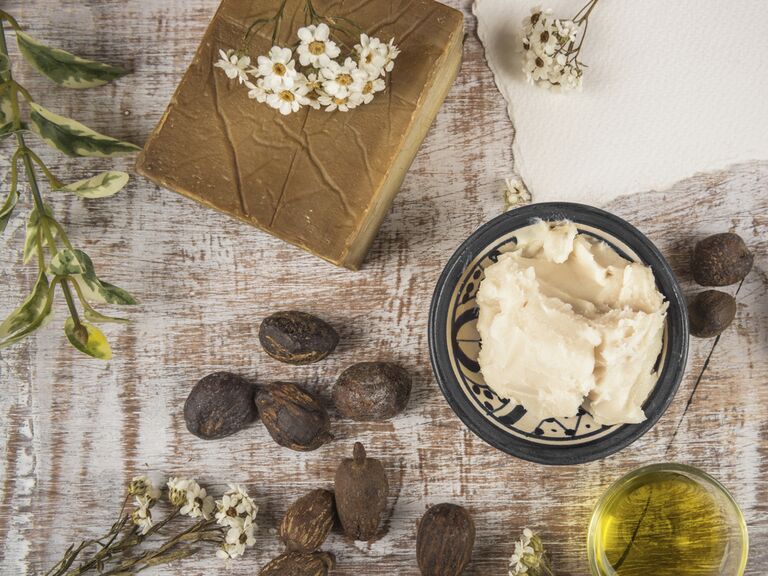
The path to clear skin is often one of trial and error; you might need to try several acne remedies before you find the right treatment for the types of acne affecting your skin. Before trying acne medication, you may prefer to give different natural acne treatment options a chance. While there's no research supporting the effective use of natural acne treatments, here are two popular options that you may want to try.
Coconut Oil for Acne
Coconut oil is all the rage, with uses ranging from hair conditioning to cooking. But some swear by it as a natural acne treatment. To use coconut oil as an acne treatment, you can include it as part of a healthy diet. The fatty acids like lauric acid and caprylic acid are metabolized into antibacterial agents in the body. Or, you can apply a very small amount and rub directly onto your skin after cleansing for an extra hydrating boost.
Tea Tree Oil for Acne Treatment
Some people swear by the disinfecting power of tea tree oil for acne treatment. It can be applied either full strength or slightly diluted with water directly onto pimples. Use a small amount on a clean cotton swab or cotton pad and dab on the affected areas immediately after cleansing. Because tea tree oil can be drying, you might choose to use both tea tree oil and coconut oil for acne as part of your clear skin regimen.
The Best Acne Products for Natural Acne Treatment
There are hundreds, maybe even thousands, of natural acne treatment products on the market, but these are a few of our favorites:
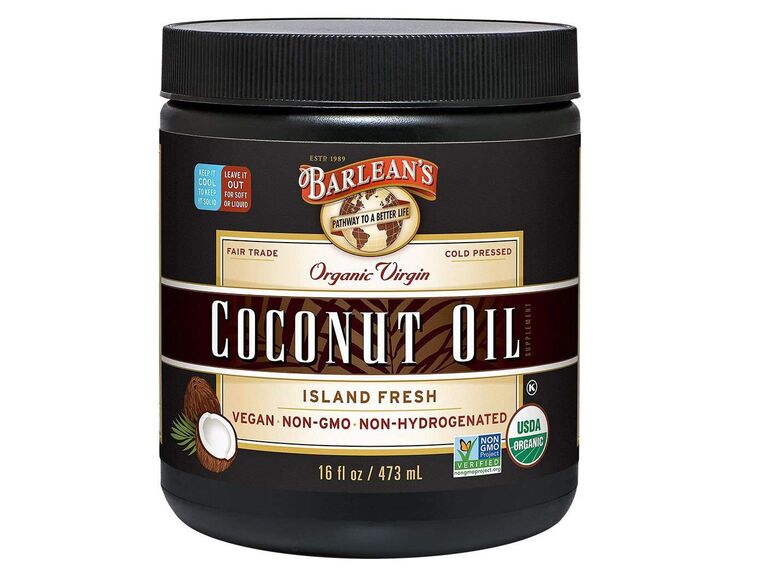
Barlean's uses organic coconuts for their product. If you're into using coconut oil for acne but also environmentally or socially conscientious, you'll like that Barlean's Organic Virgin Coconut Oil is also fair trade, non-GMO and vegan.
Barlean's organic virgin coconut oil, from $16, Amazon.com
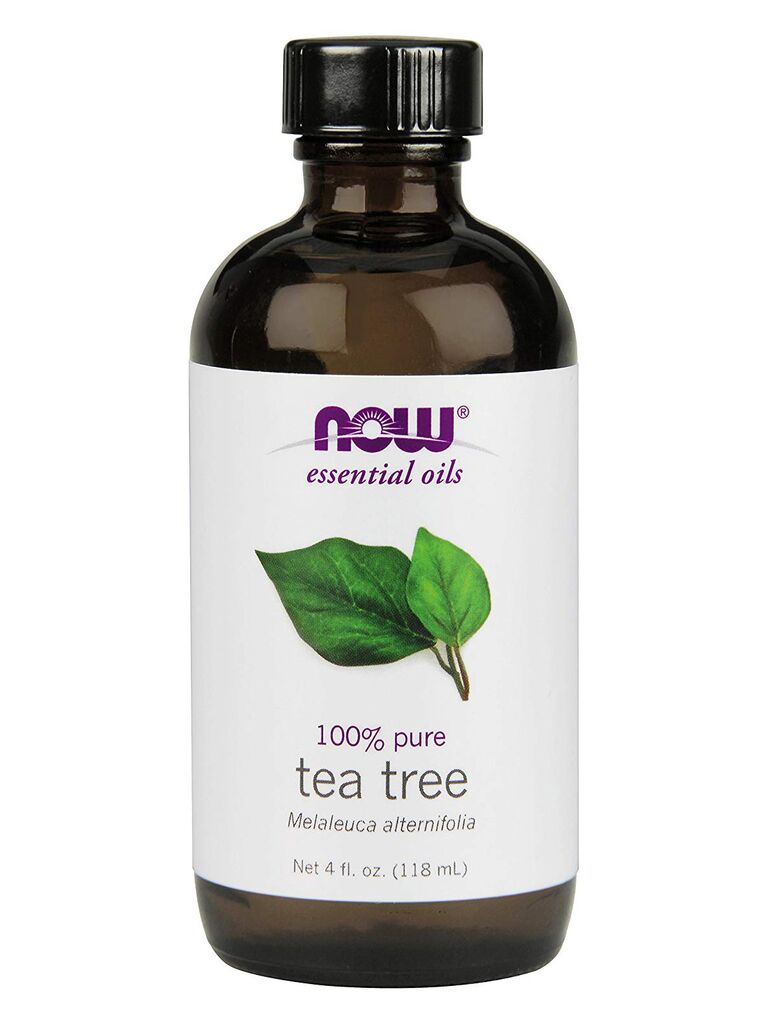
NOW Tea Tree Oil for acne is a popular choice thanks to the product's strong antiseptic and germicidal properties. Distilled from the leaves of the tea tree in Australia, this brand is 100 percent tea tree oil and also has a milder smell than you might expect.
NOW tea tree oil, from $11, Amazon.com
Home Remedies for Acne
Similar to the above natural acne remedies, these acne treatments can be inexpensive and worth giving a try. Best of all, these use products you probably already have in your household, like apple cider vinegar and toothpaste. Use home remedies for pimples with caution if you have cystic acne, open sores or inflammatory acne, which are best treated with medical supervision.
Apple Cider Vinegar Acne Treatment
Apple cider vinegar is one of better known home remedies for acne, thanks to its high beta carotene content and antibacterial properties. Here's how to make your own apple cider vinegar acne treatment:
1. Dilute 1 tablespoon of apple cider vinegar in 1 cup of clean water.
2. Wash your face with a non-abrasive, gentle cleanser. See our "best face wash for acne" options above. Pat dry.
3. Apply a small amount of the diluted apple cider vinegar acne solution to a clean cotton pad and swipe your entire face evenly.
4. Apply an oil-free moisturizer or hydrator for acne prone skin.
Use only once daily, and you might only want to use apple cider vinegar at night, as it does have a strong smell. If your skin becomes too dry or irritated, use less frequently or dilute with more water.
Using Toothpaste for Acne Treatment
If you're looking for suggestions on how to get rid of acne overnight, using toothpaste for acne spot treatment has probably come up. But does it work? Toothpaste contains ingredients like baking soda, alcohol, hydrogen peroxide and menthol that can dry out acne. However, some experts warn that using toothpaste for acne can actually cause over-drying and even skin peeling, so it should be used with caution. Here's how:
1. Wash your face with a non-abrasive, gentle cleanser. See our "best face wash for acne" options above. Pat dry.
2. Apply a small amount of toothpaste directly to your pimple(s).
3. Gently rinse with cool water after 10 minutes. Remove sooner if you experience any pain or burning sensations.
How to Get Rid of Back Acne

Back acne (sometimes called "bacne") is a potentially embarrassing and sometimes painful condition where clogged hair follicles on the back cause pimples and blackheads. Back acne can be caused by the same factors as other types of acne: diet, hormones, certain medications, genetics or any combination thereof. But when you're considering how to get rid of back acne, also remember that most people have their back covered the majority of the day. The clothing we wear matters, and the way in which we wash the skin on our back is key for clear skin, the whole body over. Learn more about common back acne causes, the best acne products for your body, and how to prevent acne on the back from returning in this section.
How to Get Rid of Back Acne Step One: Preparation
Wash your hair and rinse out any hair conditioner before using pimple remedies on your back or body. Hair conditioner often contains oils that are great for your hair, but not the skin on your back.
How to Get Rid of Back Acne Step Two: Gentle Exfoliation
Like zits on your face, back acne occurs when your pores become blocked with oil and dead skin cells. Exfoliating your back regularly might help remove these dead skin cells and pore-clogging debris before they have a chance to block pores. However, you want to take care not to scrub too hard, especially if you're experiencing an active breakout. Use a soft cloth to gently brush away surface impurities as you shower.
How to Get Rid of Back Acne Step Three: Body Wash with Acne Medication
Acne remedies benzoyl peroxide and salicylic acid are key ingredients in body washes designed to get rid of acne. Choose an oil-free body wash with acne medication like benzoyl peroxide or 2 percent salicylic acid. Apply the body wash to the affected areas and leave on for a minute or two to allow the acne medication to work its magic. Rinse well. Remember that products that contain benzoyl peroxide bleach fabric and may ruin towels, clothes and sheets/pillow cases. Change to white or something you don't mind bleaching.
How to Get Rid of Back Acne Step Four: Apply Topical Treatment and Moisturize
Use a clean towel to pat dry before applying a back acne treatment with benzoyl peroxide or salicylic acid. Use an oil-free moisturizer or hydrator.
Follow Back Acne Treatment With These Bacne Prevention Rules of Thumb
- Wear comfortable, breathable clothing made of natural fabrics like cotton, especially when you're working out.
- Shower every day and immediately after sweating or exercising.
- Women: Wear a clean bra each day and make sure it fits properly, without rubbing against acne on your back.
The Best Acne Products for Back Acne Treatment
The best acne products for stubborn acne on your back contain acne medication or natural acne treatment ingredients that kill bacteria, cleanse pores and nurture clear skin.

The Body Shop offers a soap-free body wash gentle enough to use on the whole body, with antibacterial tea tree oil for acne treatment. If you've wondered how to get rid of blackheads on your back, where they can be especially stubborn, give this affordable back acne treatment a try.
The Body Shop tea tree skin clearing body wash, from $13, Amazon.com
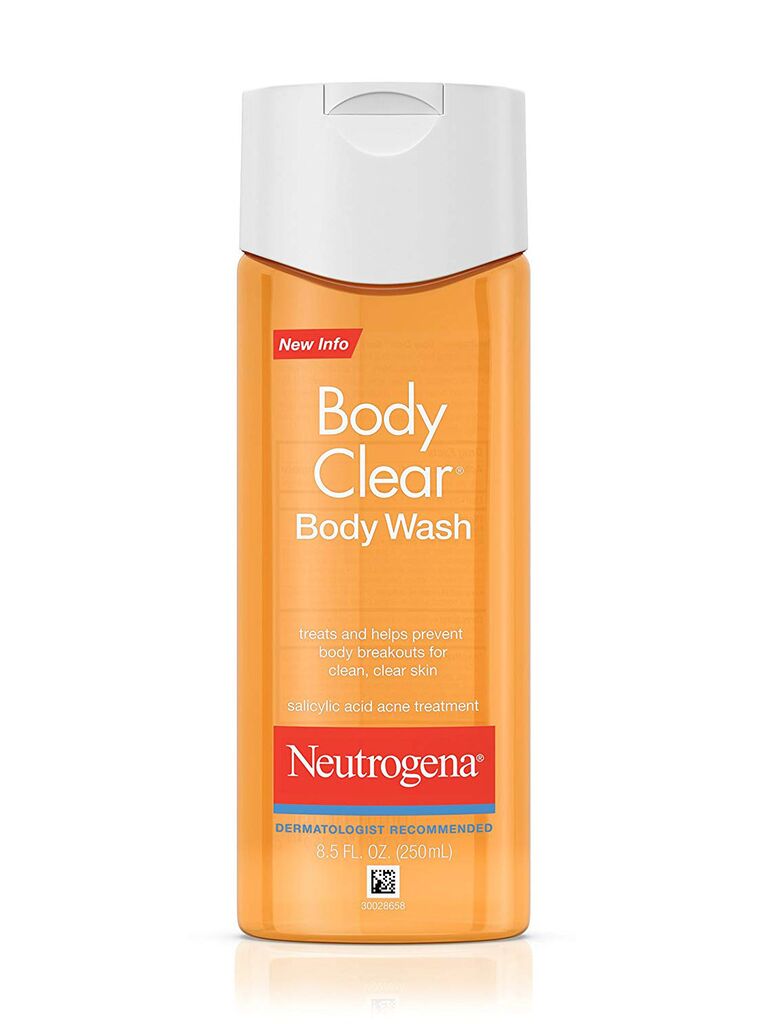
Neutrogena's acne treatment body wash contains the acne medication salicylic acid to fight back acne breakouts and prevent body breakouts. Use a small amount on a clean, soft cloth or body sponge to create a rich lather, then rinse clear.
Neutrogena Body Clear acne body wash, $6 for Amazon Prime members, Target.com
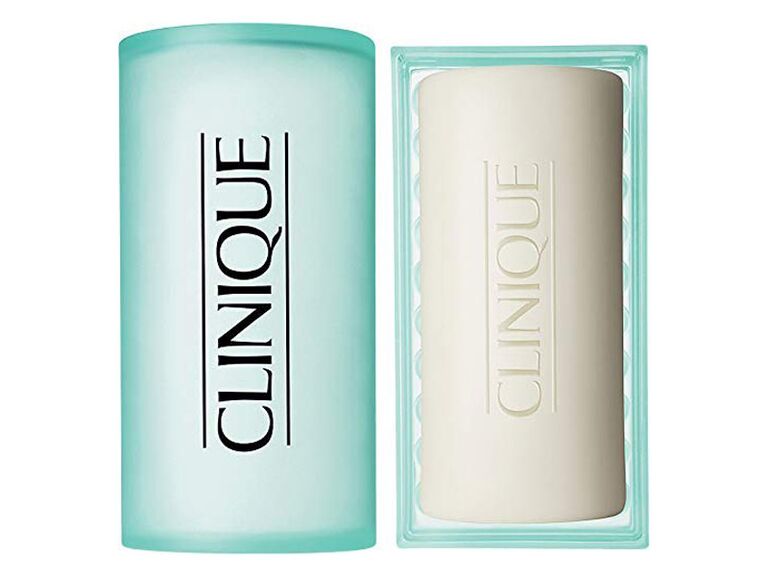
Those who prefer a bar soap over a liquid body wash can still benefit from acne-fighting salicylic acid with the Clinique Acne Solutions Cleansing Bar. This mild soap unclogs pores and removes excess oil without drying out skin.
Clinique Acne Solutions cleansing bar for face & body, $23, Amazon.com
How to Get Rid of Blackheads
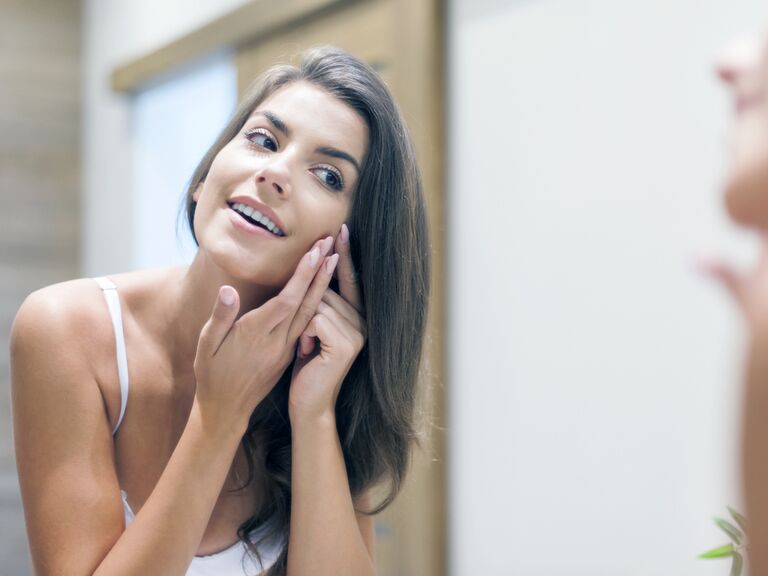
Blackheads are a mild form of acne that appear as unsightly, open pores that look darker than the skin surrounding them. They get their dark appearance from a skin pigment called melanin, which oxidizes and turns black when it's exposed to the air. Blackheads aren't caused by dirt, but by sebum (oil) and dead skin cells blocking the pore. If the pore remains open, it becomes a blackhead; if it's completely blocked and closed, it turns into a whitehead.
Baldwin says squeezing is the best way to get rid of blackheads, but it should be left to a professional if possible. "A good cosmetologist can do an awesome facial," she says. "Pore strips can also help. But both of these are made much easier by starting on a retinoid first. Prescription retinoids soften the pore contents and make the whole process more successful and less painful. With time they will also eradicate the blackheads." The best way to get rid of blackheads for good is with a skin care regimen and the best acne products for clearing the pores. Do not try to pop blackheads or dislodge the blockage with your nails, as your hands may introduce new bacteria to the pores. Instead, see how to get rid of zits fast and prevent blackheads with these acne treatments:
Are Pore Strips the Best Acne Treatment for Blackheads?
Pore strips, whether purchased over the counter or created at home, use an adhesive to cling to the impurities blocking the pore and ultimately remove the plug. Pore strips do remove pore plugs and dead surface skin cells, but they won't prevent blackheads from returning. Immediately after using them, your pores will shrink and appear smaller.
How to Get Rid of Acne Fast with Over-the-Counter Pore Strips
There are a number of pore strip brands now, but Biore was one of the first and remains the most popular. Applied wet, typically to either the chin or nose, the strip dries and sticks to built up oil, dead skin cells and other impurities clogging pores. Once the strip's dry, it's removed and all of those nasty, pore-clogging plugs come with it!
Natural Honey Pore Strips Among Home Remedies for Acne
If the thought of sticking something akin to duct tape to your nose doesn't do much for you, you can always try making your own pore strips at home. This natural acne treatment taps into the antibacterial and adhesive properties of natural honey to remove pore-clogging impurities with ingredients you probably already have at home:
1. Mix 1 tablespoon of organic raw honey in a small, microwave-safe dish with 1 teaspoon of milk.
2. Heat the mixture for 5 to 10 seconds and stir until combined.
3. When the honey and milk mixture has cooled to a comfortable temperature, apply a thin layer over the affected pores.
4. Immediately press a clean, dry cotton strip onto the skin and pat to secure.
5. Allow to dry for 20 to 30 minutes. It should not pull off easily.
6. Carefully peel the strip away with clean, dry hands.
7. Rinse the area with cool water and continue as usual with topical acne treatment and/or moisturizer.
How to Get Rid of Blackheads Without Over-Washing
Washing your skin too vigorously, too often or with the wrong products can do more harm than good. Just be patient with your salicylic acid and benzoyl peroxide, get a facial and if that doesn't work, visit your dermatologist.
Avoid using strong soaps or products that strip all oil and moisture from your skin. Your skin's natural reaction is to try to compensate by producing more oil, which will worsen your acne in the long run.
Always wash gently, even with the most severe types of acne. Harsh exfoliators and a rough scrubbing technique can exacerbate existing acne and cause rashes and painful irritation.
The Best Acne Products for Blasting Blackheads Out of Existence
Try these proven acne remedies to get rid of blackheads and ensure you keep your skin clear:
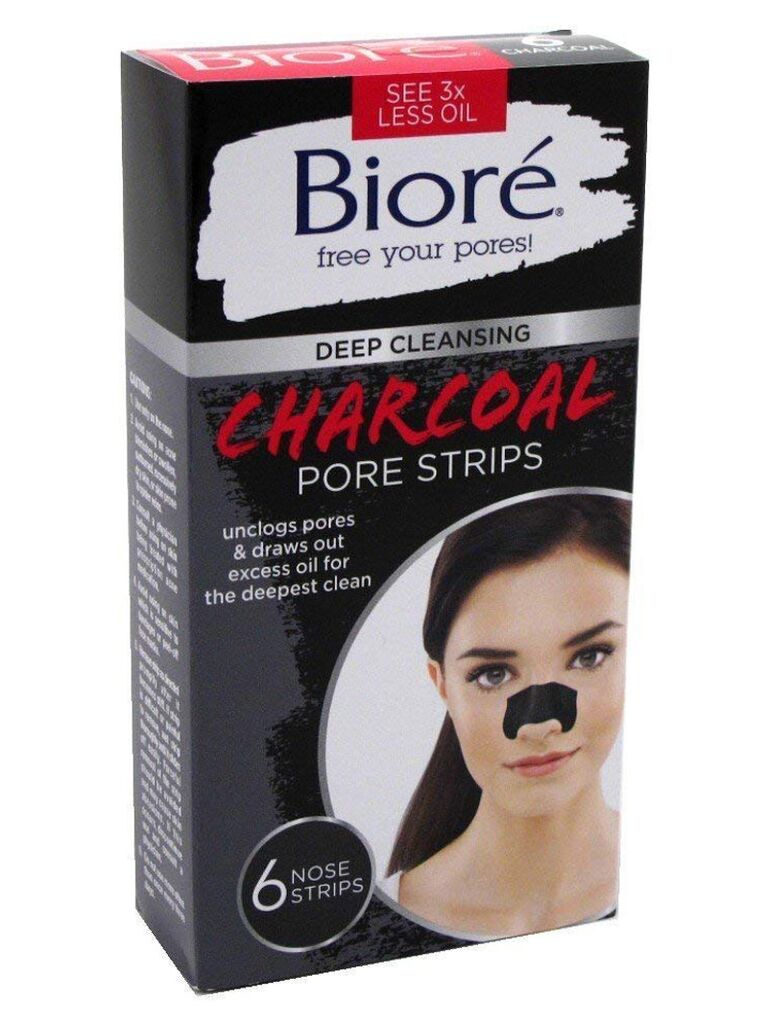
This variety of pore strip from Biore uses purifying charcoal powder to draw oil and impurities out of the pores, leaving pores smaller and skin smoother. They're only recommended for use on the nose and should be used twice a week at most.
Biore Deep Cleansing charcoal pore strips, from $7, Amazon.com
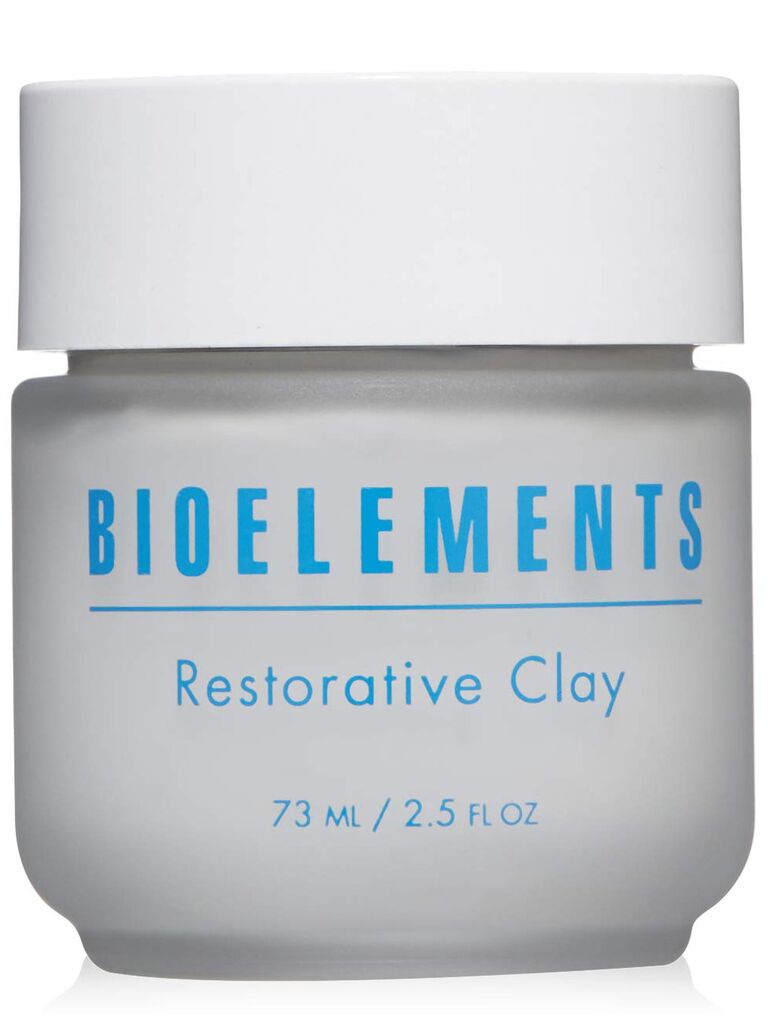
Bioelements makes a great water-based mask with natural active clay, kaolin for oil absorption, and other calming and soothing ingredients like chamomile, dong quai and watercress. Use once or twice weekly as an acne treatment to improve skin's texture, remove excess oil and dirt, deep clean pores and refine skin.
Bioelements Restorative Clay mask, from $34, Amazon.com
How to Get Rid of Acne Scars
Scarring from severe cystic acne can have harmful effects on a person's self esteem, happiness and mental health. Thankfully, there are many different acne scar treatment options available, ranging from chemical peels and skin fillers to dermabrasion and laser resurfacing. According to the American Academy of Dermatology, these are all safe and effective acne scar treatment methods. However, Baldwin says it's important to first clarify what you mean by "scar." "Many people point to red or brown spots leftover from old zits and call them scars," she says. "These are marks, not scars and they'll fade with time. Scars have textural changes and are not flush with the surface of the skin. There are two types of acne scars—innies and outies. Outies can be injected with corticosteroids and flattened. Innies can be either deep and narrow or broad, sloping and relatively shallow. Deep and narrow scars need to be cut out, but broader sloping scars can be made better by fillers, laser resurfacing and dermabrasion."
Learn more about acne scar removal below to see which method might work best for you.
Acne Scar Treatment With Cosmetic or Topical Solutions
Wondering how to get rid of acne scars? Some of these cosmetic and topical solutions are available over the counter, while others will need to be prescribed by a dermatologist.
Cortisone Cream or Injection
Cortisone cream fights inflammation and is one of the acne remedies that can help prevent scarring from worsening. Available over the counter, cortisone cream can be applied directly to inflamed acne lesions to reduce swelling and redness. A doctor can also inject cortisone into a deeper acne cyst or lesion to shrink it and help prevent scarring.
Dermabrasion
Dermabrasion is used for acne scar removal and to treat skin imperfections like wrinkles. Dermabrasion can only be performed by a qualified medical professional, as it involves removing the top several layers of skin. New skin grows over a period of weeks to replace the damaged layers.
Chemical Peels
There are a number of mild chemical peels available over the counter, but acne scar removal requires a stronger peel typically administered by a doctor or dermatologist. Trichloroacetic acid (TCA) peels are slightly stronger than alpha hydroxy acid (AHA) peels and may be used for acne scar treatment. The strongest type, phenol peels, may cause significant swelling and require up to two weeks of recovery time at home. Neither are recommended for people with active severe acne.
Skin Fillers
Temporary skin fillers have been used for years for acne scar treatment, but a permanent dermal filler was approved for use by the FDA only recently. Designed to remove moderate to severe acne scarring, Bellafill is made up of 80 percent collagen to replace lost volume and 20 percent polymethylmethacrylate, which helps your body heal by boosting protein production.
Skin Lighteners
Post-inflammatory hyperpigmentation is not an acne scar, but a red, pink, brown or tan skin discoloration where acne has previously flared up. It'll usually disappear on its own in a year or so. Many skin lightening products claim to help reduce the visibility of these acne "scars." Their active ingredient, hydroquinone, works to slow melanin production and can reduce dark brown marks, but melanin isn't the cause of red and pink acne discolorations. A better option is to use the best foundation for acne prone skin you can find to hide the marks until they naturally fade away.
Acne Scar Removal With Laser Skin Treatments
Skin care clinics and dermatologists across the country offer laser skin treatments for acne scar removal, but is it worth it? The best way to determine which laser acne scar treatment is right for you is to get different professional opinions about which type is best for your skin, and compare pricing, expected recovery time and reviews. Here's how a few laser treatments work for acne scar removal:
Ablative Lasers
Ablative lasers deliver an intense wavelength of light to the skin, removing thin outer layers of the skin (epidermis). In addition, collagen production is stimulated in the underlying layer (the dermis). Patients are typically numbed with local anesthetic and the ablation is done as an outpatient procedure. CO2 and erbium are the ablative lasers most often used for acne scar treatment.
Fractional Laser Treatment
Fractional laser treatment is less invasive than ablative laser treatment, as it targets only a fraction of the skin at a time. Fractional lasers penetrate the top skin layers, where its light energy stimulates collagen production and resurfaces the top layer of the epidermis. Treatments typically last between 15 and 45 minutes and effects become visible in 1 to 3 weeks.
Best Acne Products for Scar Removal
Photodynamic Therapy
The two laser treatment options above are great for acne scar removal, but aren't generally recommended as acne treatment. If you're still experiencing active acne breakouts and wondering how to get rid of acne with laser treatments, check out photodynamic therapy. It combats active moderate to severe acne while also diminishing older acne scars by using light energy to activate a powerful acne-fighting solution. Patients may require 2 or 3 treatments over several weeks and should expect some redness, peeling and sun sensitivity. This treatment will cost between $2000 to $3500 per series.
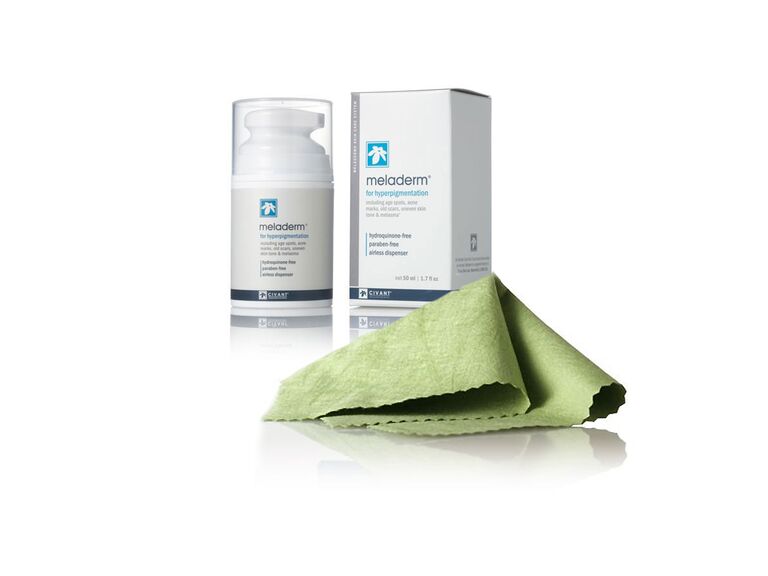
Microdermabrasion isn't suitable for deep acne scar removal, but it will help gently remove surface skin cells with each wash and make room for healthy skin growth beneath. Use with a foaming or gel anti-acne cleanser as part of your regular regimen for clear skin. Over time, microdermabrasion can help with light acne scar treatment.
Civant Skin Care Microdermabrasion cloth, $10, CivantSkinCare.com
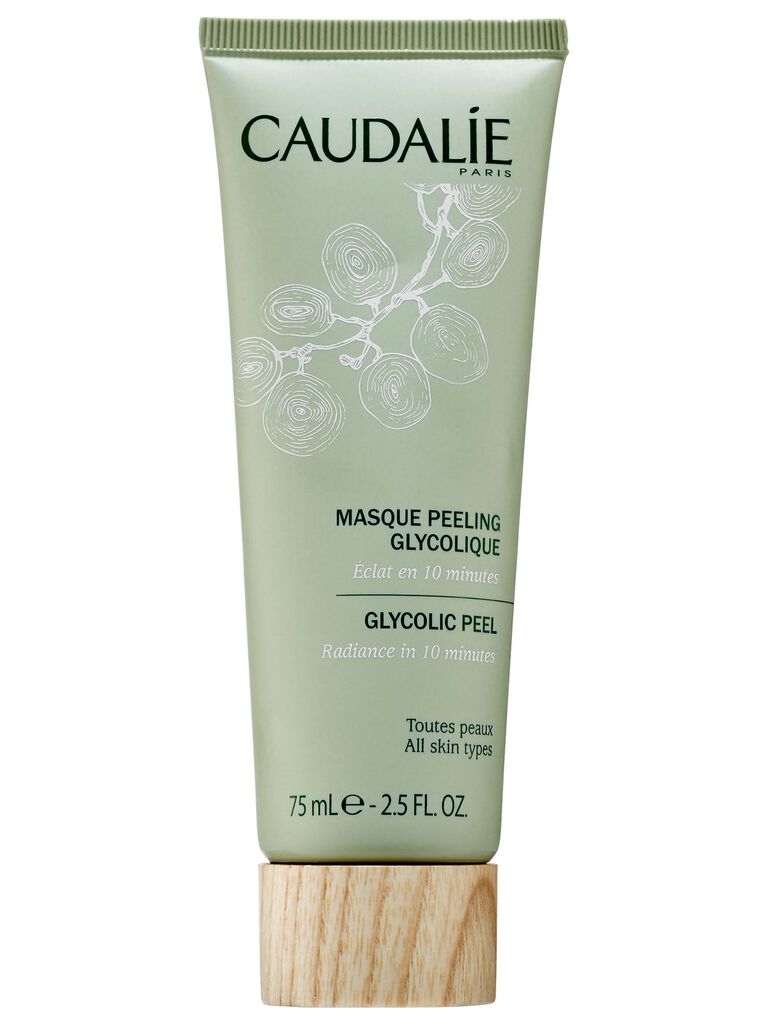
This at-home skin peel available at Sephora tightens pores, reduces oil, helps retexturize skin and diminishes dark spots. It's paraben and sulfate free, non-comedogenic and isn't tested on animals. Use this peel each week as part of your clear skin regimen to help even out skin tone and gently remove unhealthy top skin layers, revealing new, healthier skin underneath.
Caudalíe glycolic peel, $39, Sephora.com
Now that you've read our guide on how to get rid of pimples, you can start planning your wedding beauty routine. Make sure to start looking for a local beauty salon early and read up on all our wedding-related beauty advice here.
This article was medically reviewed by Hilary Baldwin, MD. Baldwin, medical director of the Acne Treatment Research Center, is a board-certified dermatologist with nearly 25 years of experience. Her area of expertise and interest are acne, rosacea and keloid scars. Baldwin received her BA and MA in biology from Boston University. She became a research assistant at Harvard University before attending Boston University School of Medicine. She then completed a medical internship at Yale New Haven Hospital before becoming a resident and chief resident in dermatology at New York University Medical Center.
Comments
Post a Comment